This is the second post in a series about the Leica Q2 Monochrom. You can see all the other posts in the series by looking in the Category List drop-down menu on the right side of the page.
Aside from the one-stop increase in speed, which is undisputable, the putative advantage of monochrome capture is increased sharpness. I have not found that to be the case in previous testing, but I have noticed a reduction in aliasing. Now, with the Q2 Monochrom in hand, it was an obvious thing to test it against the Fuji GFX 50S, which has similar resolution. I used a Siemens start for the target, which is a cruel visual test for aliasing. If you’re going to see it, you’re going to see it with a Siemens star.
I compared the Q2, with its fixed 28mm lens, to the GFX 50S with a 45mm lens, adjusting the target distance slightly to get about the same target size in the image. Target distance wat about 15 feet.
The scene, with the Q2:
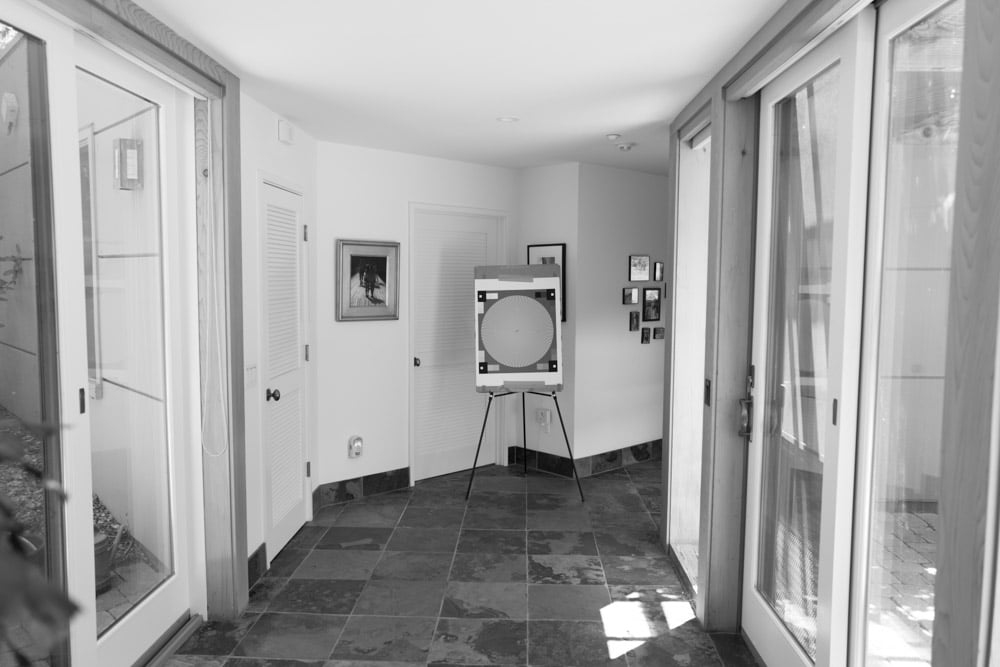
To get equivalent diffraction, I shot the Q2 at f/2.8 and f/4, and the GFX at f/4 and f/5.6.
The details:
- Low-contrast sinusoidal Siemens star chart
- RRS carbon fiber legs, Arca C1 head
- Manual focusing with max enlargement and peaking
- 4 shots at each condition, keep only the sharpest one.
- 2-second self timer delay
Crops, at slightly greater than 100%, starting at f/2.8 for the Q2:
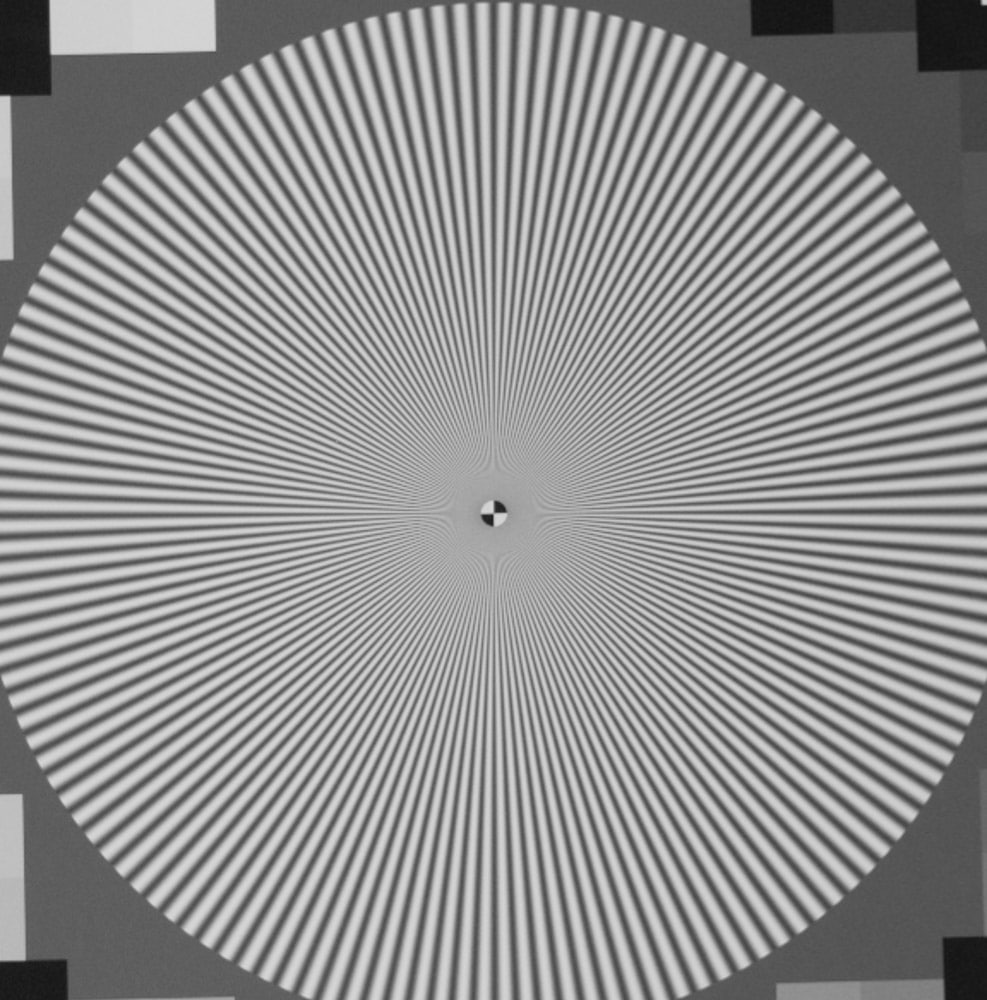
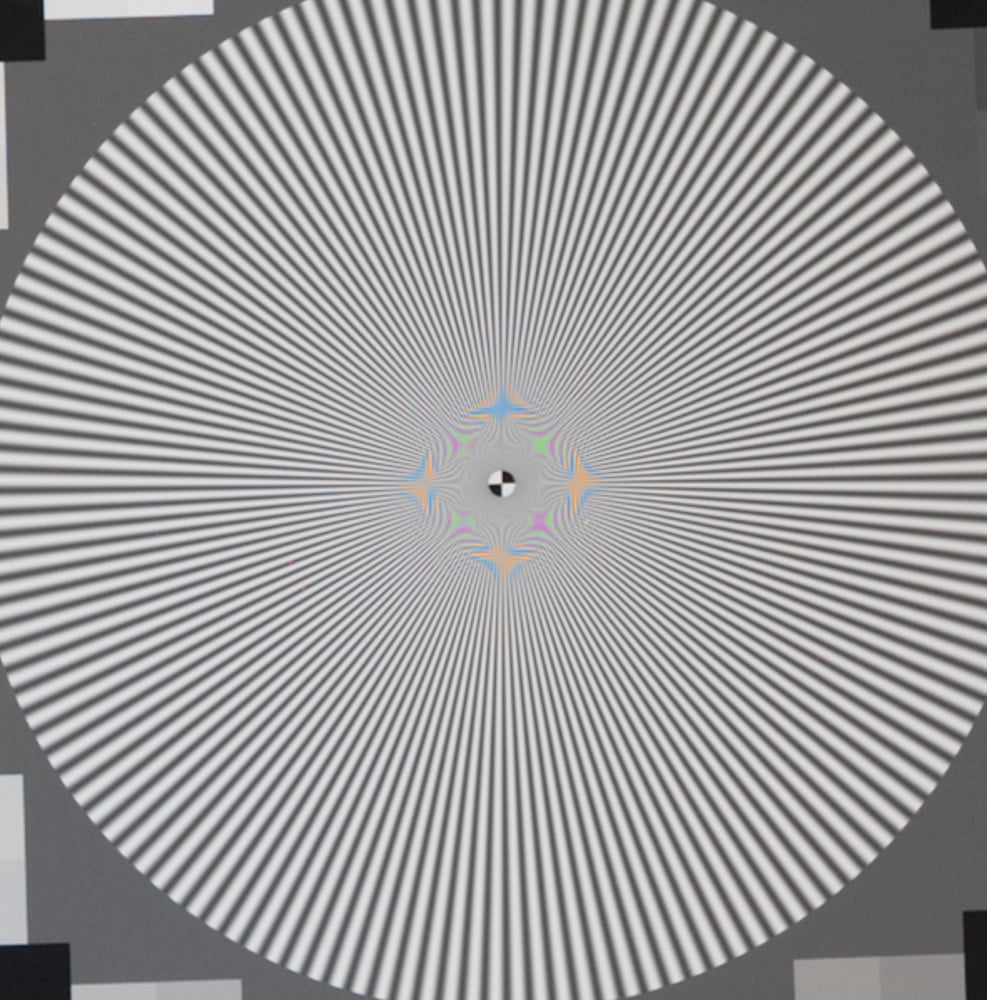
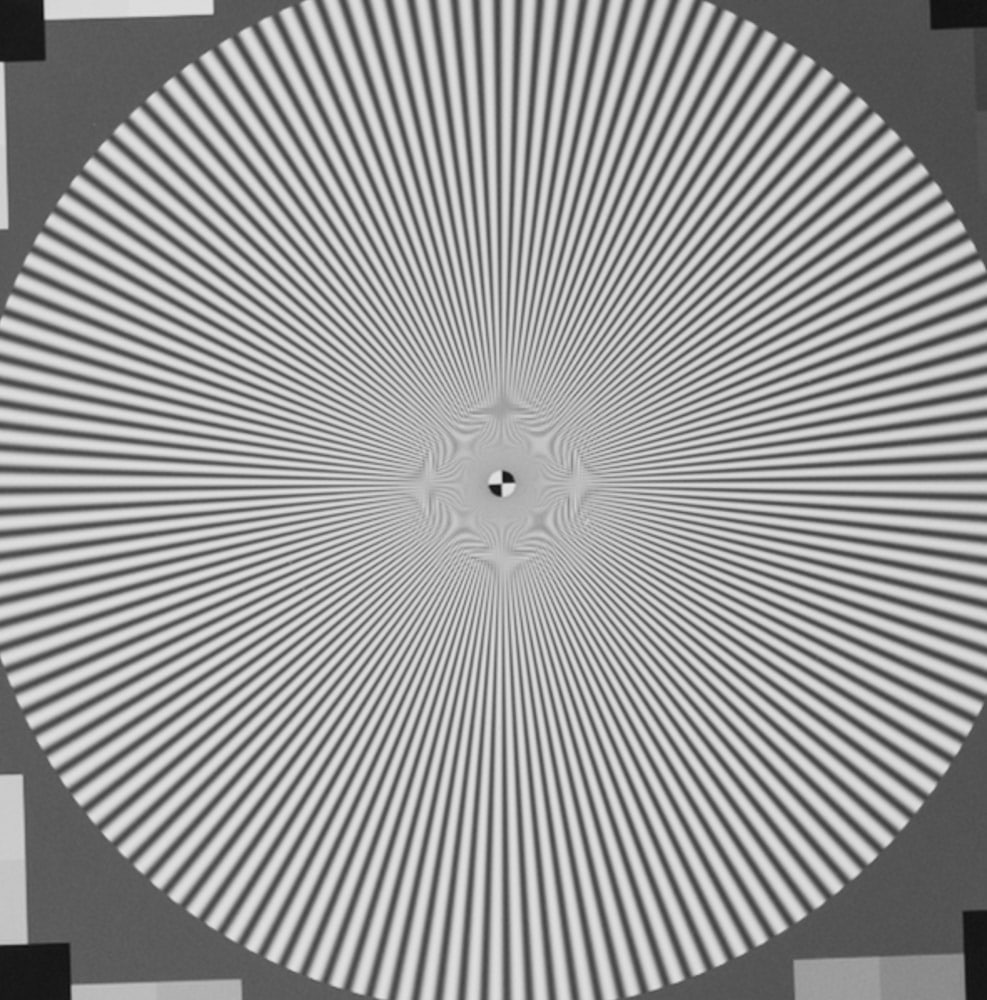
There’s a lot more aliasing in the GFX shot.
Now let’s look at f/4 and f/5.6:
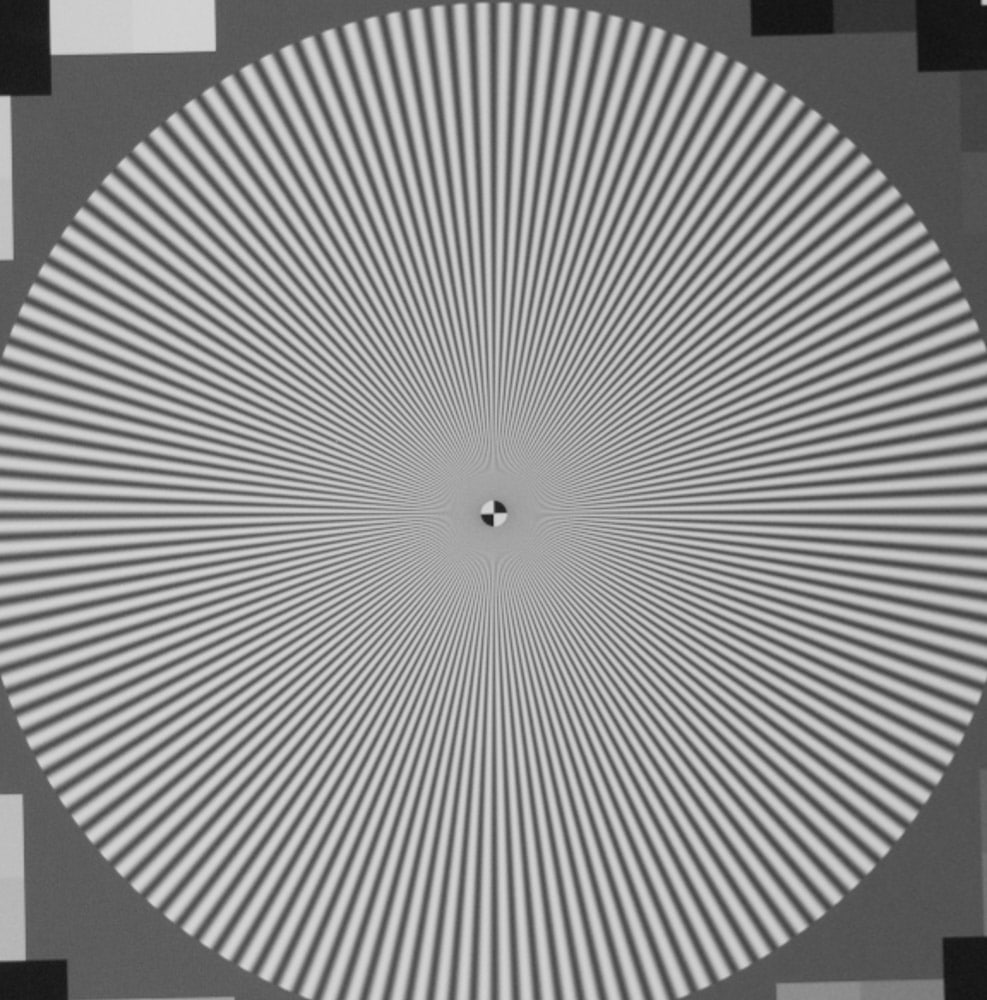
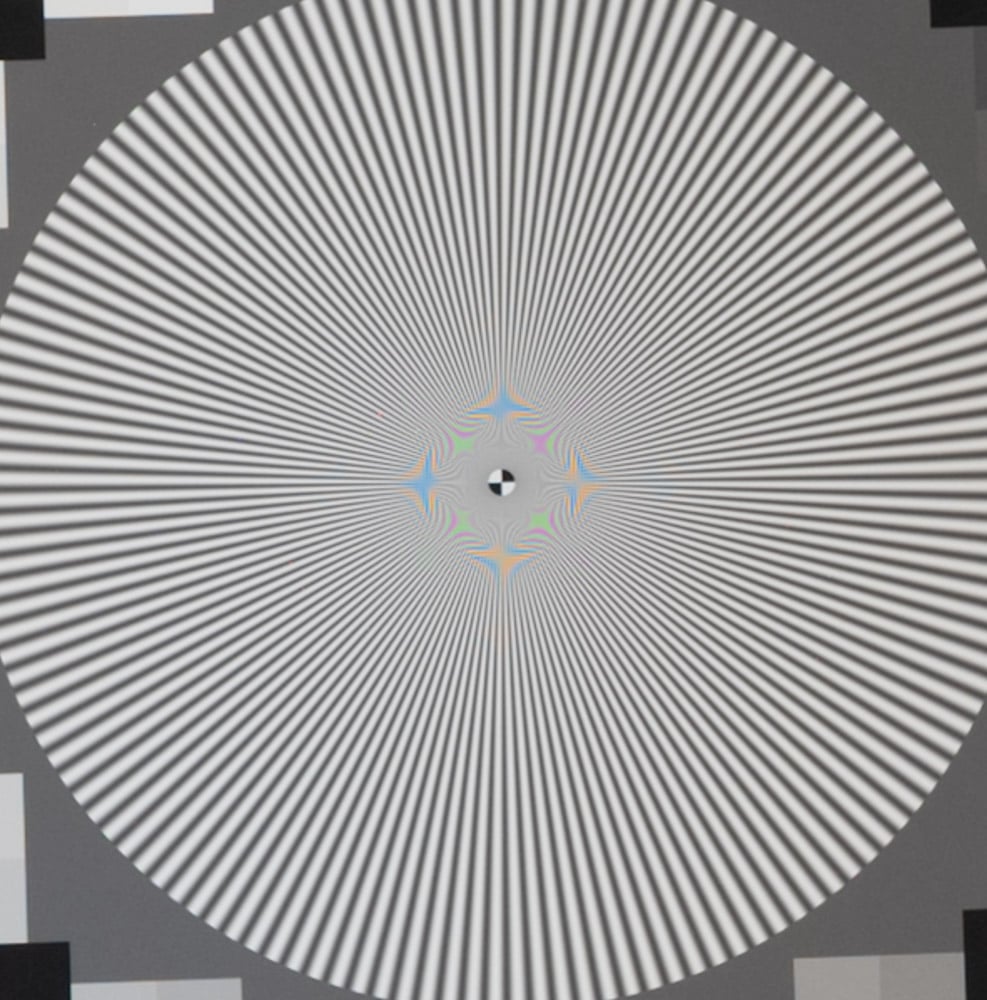
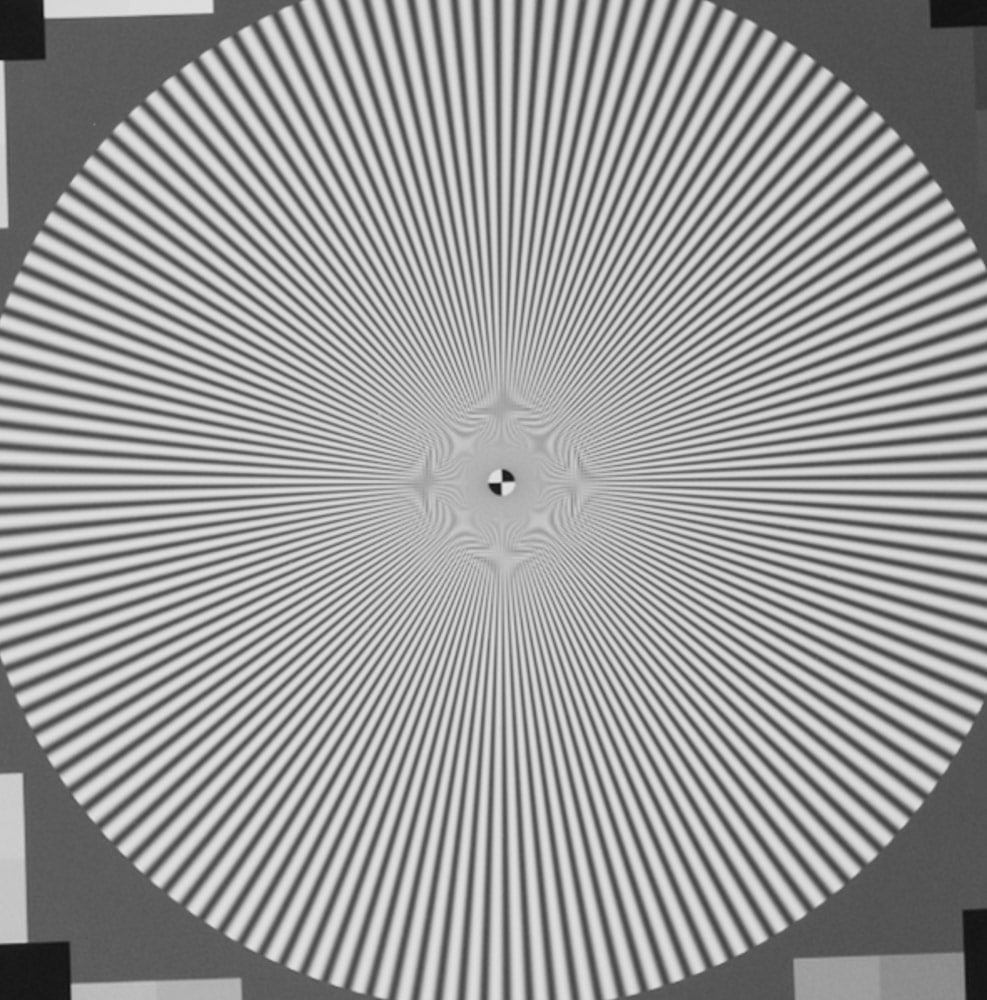
Same general idea.
Lightroom has a demosaicing mode that they call Enhanced. Let’s see what that does for the GFX images.

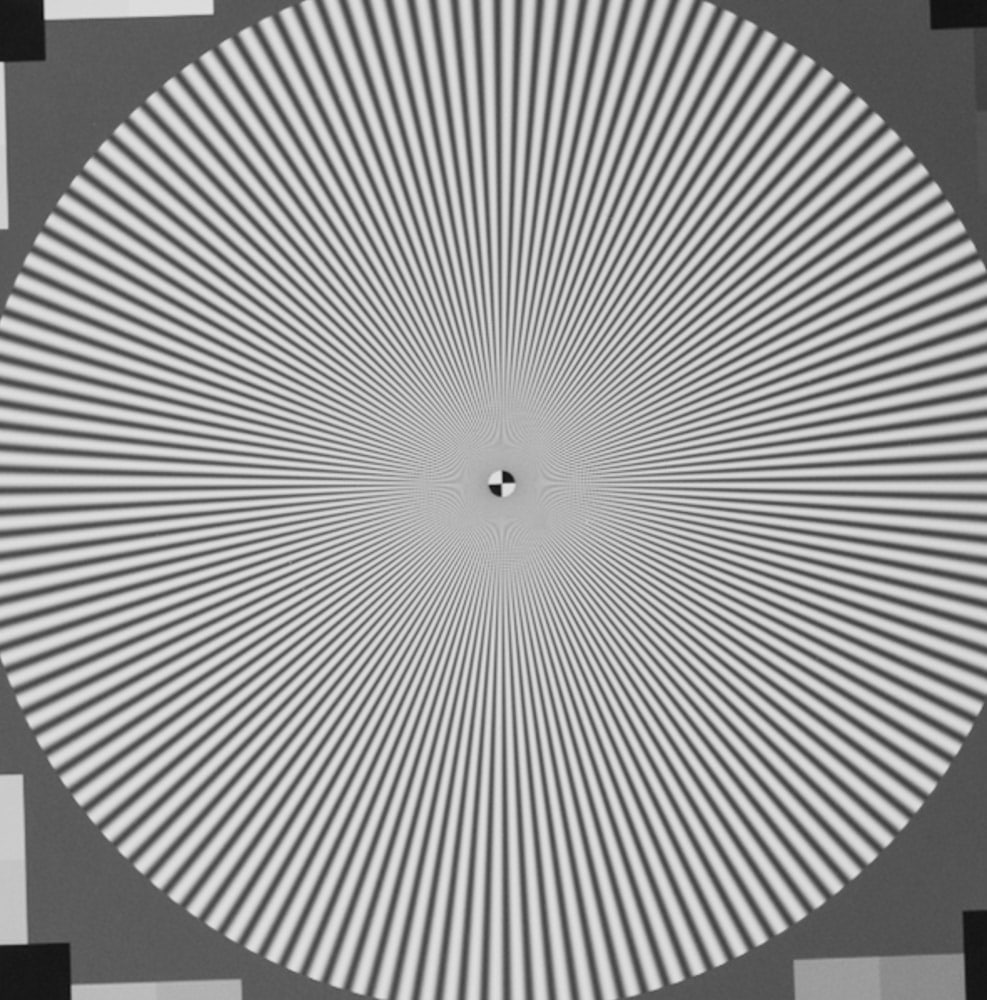
That’s a big improvement for aliasing, but some detail has been lost. The nod still goes to the Q2.
At f/4 and f/5.6:

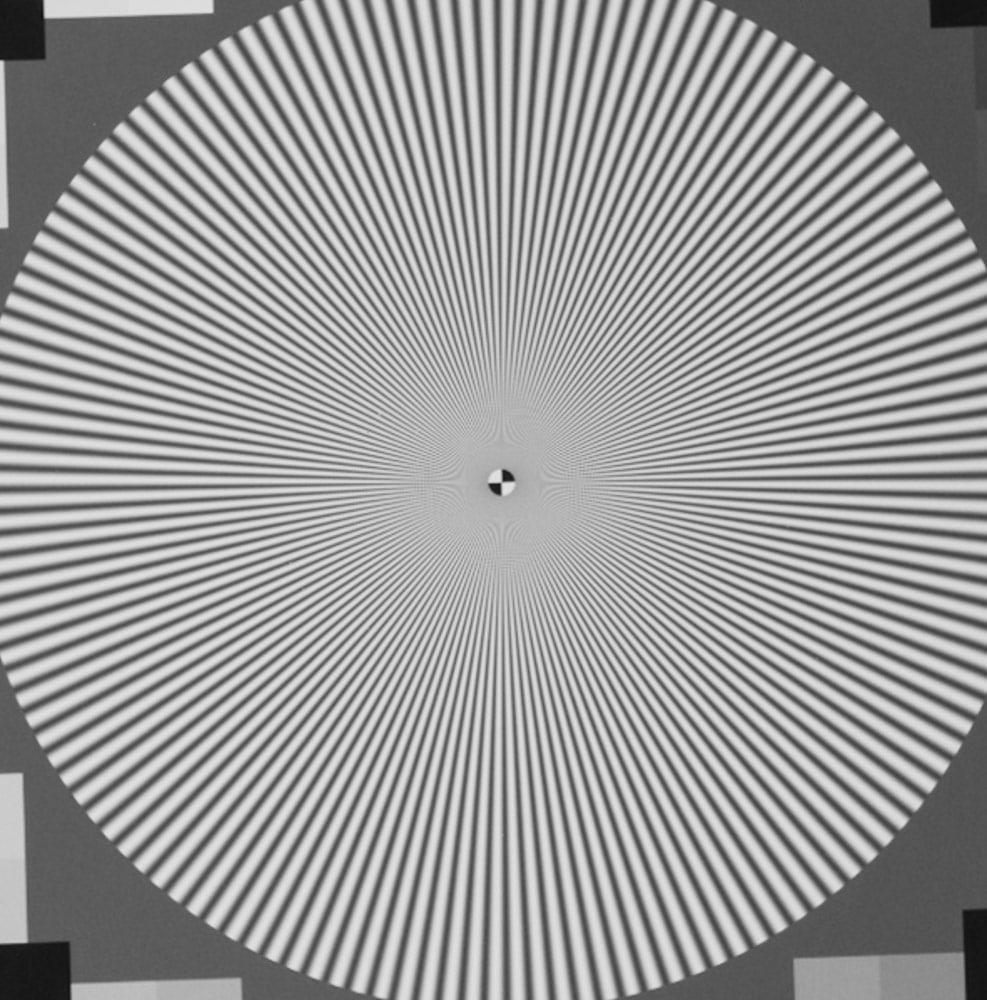
The Q2 image is definitely better.
Testing notes: It is really hard to focus the Q2 precisely using manual focusing. The first problem is that the helicoid is too fast. Little motion ofhte ring produces a large change in the focal plane. It shares this in common with most M-series lenses. The second issue is that the focus peaking has only one sensitivity setting,a nd that is way too high for this kind of work.
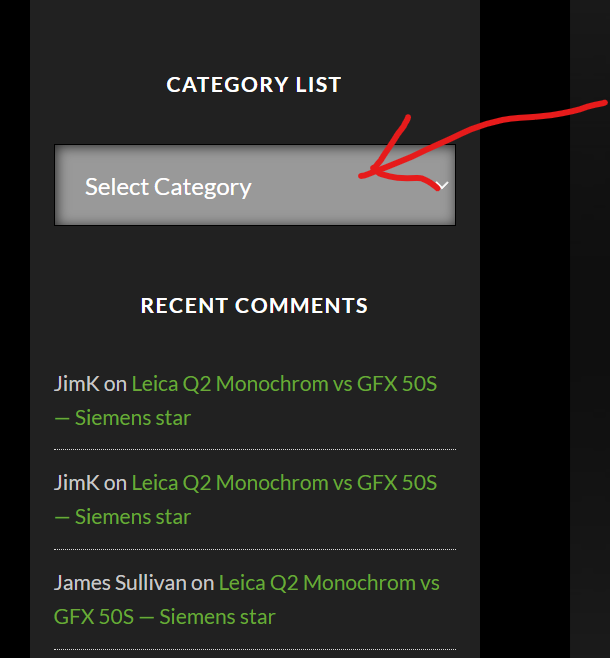
The Q2 lens is focus-by-wire unlike M lenses. Although it is focus-by-wire, it still feels like a true manual focus lens. Spot AF or Field AF with the focus box adjusted to its smallest size on the Q2/Q2M is extremely accurate, unlike the AF of the 50S/R with GF lenses that seem to hit a different point of focus with every try, particularly at longer distances.
It sure does. It’s way too twitchy. I don’t know how it could be FBW and have a mechanical distance scale, but I suppose that’s possible. The throw is only 90 degrees, which is about the same as the M lenses, and very fast for accurate work.
The mechanical feel of the Q2 focus ring is so good, I had to email Leica to confirm it was FBW, which they did. I have read complaints that the Q2 DOF markings on the lens are not accurate at some distances, but I never tested it.
Your experience with the GF lenses and AF is quite different from mine.
https://blog.kasson.com/gfx-100/gfx-100-eye-detection-af-accuracy-numbers-and-samples/
https://blog.kasson.com/gfx-100/gfx-100-af-s-and-af-c-accuracy-with-110-2-lens/
https://blog.kasson.com/gfx-50s/gfx-af-accuracy-restated/
The AF inconsistency I had was when trying to focus on infinity at the horizon. While watching the digital DOF scale at the bottom of the frame, it would shift around with each AF lock even though I kept the aperture consistent in aperture priority mode. There have several firmware updates since I last shot the 50mp GFX cameras, though, so maybe it’s been improved.
I didn’t notice the same issue with the 100S.
Greg Johnson here Jim. It was nice chatting with you on email about the Q2. This test was very interesting as I just shot the Q2 for 6 weeks in Sicily and had so much fun doing it. I love that camera. I am about to get the mono Q2 and am very interested if the claims (by Leica and others) of significantly greater sharpness and res/IQ (maybe not the words Leica used) are true.
Speed? I think just the claim of 1 stop better will help me on all those hand-held dark church shots.
I think I must have shot in about 150 old churches on this trip. I posted 1700 Q2 shots on my Flickr if you want to bore yourself and flip through a few to see some walk-around field shots.
The Q2 is a joy to carry and really fun to fiddle with and shoot. I was not aware that the MF was not that accurate in terms of finding exact focus, but I rarely MF the Q2 (but so sometimes for fun or when I switch it to macro mode). I’m also amazed that you find that the IQ (maybe not your word) is better with the Q2 than the GFX 50. I didn’t take my GFX gear on this trip (for the first time in years) but I won’t dispute that. It is close. But I don’t know. You did a good job of trying to even out the difficult comparison issues between different focal lengths and sensor sizes. But you know better than anyone how to try to do that as best you can and the comparison is very interesting. It is a flat test chart but the results are still very interesting.
How do you like the Q2? I love it. And for GFX shooters like you and me, it is the perfect compliment camera. It gives a GFX shooter a lot of pleasure to drop the load occasionally and walk around with the Q2.
And Jim, The Q2 has an issue that I found on my first shooting trip and on every shooting session since. 3-4% of all shots have a vibration blur caused by n OIS problem of some sort. Leica knows about it and they will fix it with the Q3. It doesn’t really bother me. I just see it and delete the shot in post. Of 4000 shots the past 6 weeks, it happened about 70 times, which is less than usual because it has happened 4-5% of the time for the past 2 1/2 years with probably 30,000 shots. happens about 4% of the time in all circumstances at all speeds and apertures. Doesn’t matter. And I have had 3 Q2s. I sent Leica about 90 examples. It doesn’t bother me anymore. I just delete it when I see it.
Thanks, Greg. See this:
https://blog.kasson.com/leica-q2-monochrom/leica-q2-qa/
Do you have manual “focus ring operation” set to linear in the Fujifilm? I don’t have any GFX but on APSC with two f1.4 primes I have, it is way too sensitive and therefore almost unusable (except maybe in video). The nonlinear mode is plain bad as well because it is, well not linear…
I wonder whether Fujifilm does the same bad job on the GFX.
No.
I don’t find the FBW operation on the GFX cameras and GF lenses to be a problem for precise focusing.